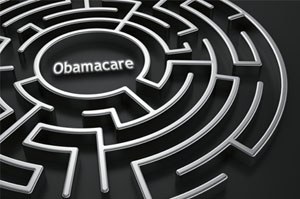Congratulations. You bought insurance through one of the online Affordable Care Act exchanges, possibly after days or weeks of trying to get the site to work.
Don’t relax. Joining the plan is only the first challenge. Now you have to understand it.
Policies sold through the online portals — to more than 3 million people so far — cover essential benefits and put a cap on your out-of-pocket medical costs.
But you need to follow the rules. And the boilerplate explanation you got from the insurance company may be hard to understand.
What do members need to know about these plans that they probably don’t?
Carry your membership card everywhere.
Make copies. It’ll save huge amounts of hassle if you have an unexpected doctor or hospital visit.
Understand your plan’s doctor and hospital network.
Insurance companies negotiate participation and payment rates with a network of providers to control costs.
“A lot of these exchange plans, in order to stay affordable, have much smaller networks than people are used to,” says Nancy Metcalf, a senior editor for Consumer Reports. For many new members, “just because their friend has a plan and can go to a particular hospital doesn’t mean that they necessarily can.”
You can check a plan’s directory — either online or often part of the documents you receive when you enroll — to find out if specific physicians are part of your network. You can call doctors’ offices to confirm, too.
Stay in the network!
The health law says that, once you join a qualified plan, you won’t pay more out of pocket per year than $6,350 for an individual and $12,700 for a family.
But this applies only to in-network care. Whether you’re in an HMO that pays almost no out-of-network benefits or a PPO that covers some, the pocketbook protections don’t apply if you use a non-network doc or hospital.
Non-network providers also frequently bill you far more than what they charge patients in their networks for the same procedure.
Try to stay in-network even if it’s for emergency care.
Insurance plans do have to pay for non-network emergency visits under the health law. If you’re in a car crash far from home you can’t be picky about which hospital saves your life.
But non-network hospitals often “balance-bill” the difference between what your plan pays and what they charge, which is often much more.
Avoid all emergency rooms unless it’s really an emergency.
Traditionally, health plans came with a modest copayment for an emergency visit — maybe $150.
But many policies sold under the health law, even those in the more expensive “gold” category, not only have ER copays of several hundred dollars but also subject ER charges to the overall deductible. (Copays are flat fees for specific services. Deductibles are what you pay out of pocket before the insurance kicks in.)
That means you could be billed for the full cost of an emergency visit — up to the out-of-pocket limit.
“This is a huge difference and will really hurt the unsuspecting person,” says John Jaggi, an Illinois insurance broker. “We’re putting a lot more people into that exposure here.”
Broken leg? Head to the hospital. Sprained ankle? Maybe wait until the urgent care center or doctor’s office opens.
Pay monthly premiums on time and accurately.
“Do not mess around. Pay your premium,” admonishes Karen Pollitz, a consumer specialist at the Kaiser Family Foundation. (KHN is an editorially independent project of the foundation.) “Otherwise that will be the end of you and you won’t get to sign up again until the next open season.”
(Open enrollment for 2014 coverage ends March 31. Open enrollment for 2015 begins Nov. 15.)
Even underpaying the premium by a few cents could give the insurance company grounds to kick you off, she said. Insurers allow a brief grace period if you get behind — somewhat longer if you’re receiving premium subsidies — but they will terminate coverage for nonpayment.
Register online with your new insurance company.
Insurance sites are good for tracking claims. Increasingly they also let you shop around for the best deals on non-emergency treatment.
“Your health plan might pay one imaging center half what it pays another imaging center,” Metcalf said. “That’s really important if you’ve got a big deductible.”
Save paperwork. Make sure you really owe what doctors and hospitals bill you for.
“Now is a good time to become a pack rat,” says Pollitz. “If you’ve got any concern, it really is worth it to make a call and get them to explain what they did.”
If you don’t get satisfaction from providers or insurers, try regulators.
Check the insurer’s explanation of benefits detailing your claims. It may show a phone number for a consumer assistance program in your state to help deal with medical coverage.
Here is a list of consumer assistance programs. This list has contact information for state insurance departments and other regulators.
Do read the plan’s summary of benefits and coverage.
“Get it and print it out, because that has the details of your plan,” says Metcalf. “How it works. What do you have to pay in order to go to a primary care doctor? Is it before or after the deductible?
“How big is your deductible? How much does it cost to go to the emergency room?”
It’s not like reading John Grisham. But the subjects — your health and your money — are really important.







